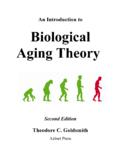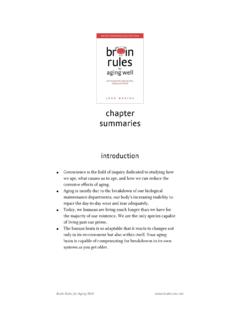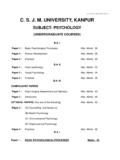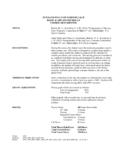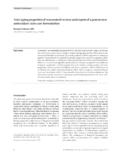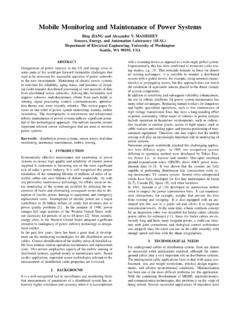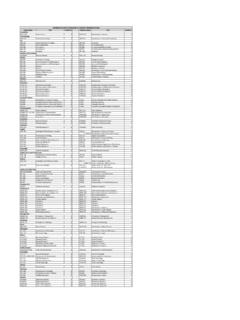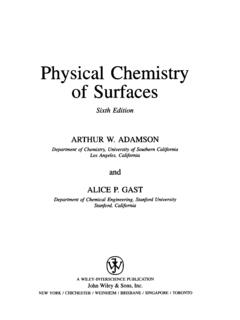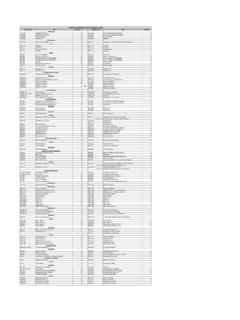Transcription of Depression: Major Depressive Episode - - RN.org®
1 Depression: Major Depressive Episode Reviewed September 2017, Expires September 2019 Provider Information and Specifics available on our Website Unauthorized Distribution Prohibited 2017 , , , LLC By Wanda Lockwood, RN, BA, MA The purpose of this course is to explain the causes, variations, assessment, symptoms, and treatment of Major depression. Upon completion of this course, the healthcare provider should be able to: Discuss the incidence of depression. Discuss biological theories of depression. Describe the primary neurotransmitters associated with depression. Discuss the psychodynamic theories of depression. Describe the criteria for Major Depressive Episode , including the 2 required symptoms and at least 4 other symptoms. List at least 6 clinical specifiers used to describe the symptom pattern of depression. Describe at least 8 factors to assess. Discuss gender differences in depression. Describe 4 commonly-used depression scales.
2 Describe safety measures for those with suicidal ideation. Discuss SSRIs, tricyclic antidepressants, atypical antidepressants, and MAO inhibitors, including use and adverse effects. Discuss the use of electroconvulsive therapy (ECT). Discuss two types of commonly-used psychological therapy. Introduction Purpose Goals Virtually everyone experiences periods of depression or sadness, often related to work, social, and family responsibilities or conflicts or loss, and while the person may experience a lack of energy, agitation, or exhaustion, these feelings are usually transient. However, depression that persists and increases over time may seriously impact a person s ability to function. Females have about twice the incidence of depression as males with 10-25% of females and 5-12% of males experiencing Major Depressive episodes at some point. Onset of depression is most common in the mid-20s, but this varies. About 19% of older adults (>55) experience depression, and this rate increases to 37% for older adults with comorbid conditions.
3 Depression is also higher among single parents, the unemployed, and those in lower socioeconomic levels. Depression is often co-morbid with other psychiatric conditions, such as post-traumatic stress disorder (PTSD), obsessive-compulsive disorder, panic disorder, social phobias, and generalized anxiety disorder. Depression also correlates with physical illnesses, especially in older adults. Disorders often associated with depression include HIV/AIDS, Parkinson s disease, cancer, stroke, diabetes, and heart disease. What causes depression? There are a number of different theories about the causes of depression, with most current research focusing on chemical imbalances; however, it s clear that in many cases a combination of factors are involved. In some cases, depression may be triggered by trauma or loss, but in other cases no trigger can be identified Family history is especially important when determining the cause of depression because those with a first-degree biological relative with depression have double the risk of developing depression as the general public.
4 Identical twins are up to 4 times more likely to both be affected by depression than fraternal twins, suggesting that a genetic predisposition is one but not the only factor. If genetic risk is present, Biological theories that person is more likely to develop mental illness over time with aging , life stressors, and/or negative environmental interactions. Much current treatment is based on neurochemical theories that suggest depression is caused by underproduction or depletion of neurotransmitters, especially serotonin, norepinephrine, and dopamine. These neurotransmitters act in areas of the brain that control emotions, stress reactions, sleep, appetite, and sexuality. Serotonin affects behavior, including mood, aggressiveness, irritability, pain perception, and activity. Serotonin also influences neuroendocrine processes. People with depression often have a deficit of serotonin as well as abnormal levels of growth hormone, cortisol, and prolactin.
5 NIH Dopamine is a stabilizing force in the brain, regulating the flow of impulses and affecting perceptions of pleasure and reward. Norepinephrine, which provides energy, is often decreased with depression, but in some people, it is increased, so the mechanism by which it affects mood is not clear. Norepinephrine is primarily responsible for mediating arousal and the reward system, and is released in response to stress. Some researchers believe that acetylcholine may also be implicated in depression. Acetylcholine affects learning, short-term memory, arousal, and pleasure/reward systems. While medications that alter the levels of particular neurotransmitters relieve depression in many people, they don t work for everyone. Endocrine disorders have also been associated with depression, suggesting that neuroendocrine imbalances may affect mood. Depression may occur with abnormalities of the thyroid gland (especially elevated TSH), adrenal glands, parathyroid glands, and pituitary gland.
6 About 40% of people with depression have elevated levels of cortisol, especially older adults. Developmental hormone changes at puberty or hormone disruption related to disease any also contribute to depression. Women sometimes develop a severe form of premenstrual syndrome, premenstrual dysphoric disorder (PMDD) with feeling of depression associated with hormonal changes, and women are at increased risk of depression during menopause when estrogen levels fall. There are many psychodynamic theories about depression, many focusing on the individual or family. Some theories, such as Freud s, have lost favor, but there may be some valuable insight in each theory: Beck: Depression results from distortions in cognitive thinking, a negative view of the self, the world, and the future. Bibring: Depression occurs when people feel unworthy because they not able to achieve ideals they believe are important. Freud: Depression is anger turned inward because of real or perceived loss.
7 Horney: Depression results from being reared by rejecting or unloving parents. Jacobson: Depression occurs when the ego is overpowered by the superego. Meyer: Depression is the reaction to negative life experiences. Major Depressive Episode The American Psychiatric Association (APA) lists a number of different types of depression in the DSM: IV-TR, generally variations of Major Depressive episodes. For example, about 9% of those diagnosed with depression exhibit psychotic symptoms, such as hallucination, delusions, and paranoia. Psychodynamic theories A Major Depressive Episode is two or more weeks of a depressed mood, profound and constant sense of hopelessness and despair, and/or loss of interest in all or almost all activities. Criteria include 5 of the following, including the first 2: Depressed mood most of the day. Diminished interest in most or all activities previously found enjoyable (anhedonism). Significant weight gain or loss without dieting ( 5% in a month).
8 Insomnia or hypersomnia. Agitation or psychomotor retardation. Persistent pessimism and feelings of worthlessness and guilt. Constant fatigue. Feelings of worthlessness. Reduced ability to focus on tasks. Recurring thoughts of death or suicide. A number of clinical specifiers are used to describe the symptom pattern of depression. These include: Single or recurrent Episode . Mild, moderate, severe: Descriptor depends on severity of symptoms. Psychotic features: Hallucinations, delusions. Catatonic features: Psychomotor disturbance, negativism, mutism, echolalia, or echopraxia. Melancholic features: Symptoms exaggerated and severe. Dysthymic (Chronic): Current Episode has persisted 2 years. With seasonal pattern: Seasonal episodes (usually fall or winter) outnumber seasonal episodes. Postpartum onset: 4 weeks postpartum. Complicated bereavement: Excessive grieving for extended periods of time. Bipolar disorder: Cyclic periods of depression and mania may alternate.
9 Without treatment, a Major Depressive Episode usually abates within 6 to 24 months. Depression may be cyclical to some degree as 50-60% of those with depression have a second Episode , and 70% of those who have a second Episode have recurrence. Assessment Appearance People may appear sad with head down, slouched into chair. People may avoid eye contact. Some Criteria may be disheveled or unkempt. Responses Some people may have difficulty answering questions or exhibit latency of response (requiring up to 30 seconds to respond). Anxiety Some people may exhibit psychomotor agitation, signs of anxiety, such as wringing hands, pacing, or the inability to sit still. Affect May be blunted or flat. Mood People may describe themselves in negative terms, such as stating that they are failures. They may also lose pleasure in normal activities and exhibit anger at themselves or others. Cognitive processes Thought processes are often very slow, and people may have difficulty concentrating and memory impairment.
10 Some may ruminate, or go over the same thoughts over and over like an endless loop in their minds. People often believe they are hopeless and have constant pessimistic thoughts. They may have suicidal ideation. Orientation Some people, especially those with psychotic manifestations and hallucinations or delusions, become disoriented to person, time, and place, while others remain oriented. Judgment People exhibit impaired judgment related to difficulty concentrating, impaired problem-solving ability, negative thought processes, and apathy. People may or may not have insight into their behavior or symptoms. Self-esteem Most people exhibit decreased self esteem and think of themselves as worthless or losers. They may feel guilty about their ability to perform and come to believe that family and friends would be better off without them, increasing risk of suicidal ideation. Responsibilities People are often unable to carry out their roles or responsibilities in the home, academic, or work environment, putting severe strain on relationships.










